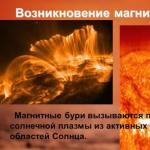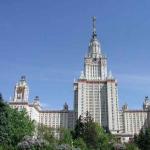You can experience a kind of aesthetic shock in the almost hour-long documentary film “Blockade” by Sergei Loznitsa, edited from practically unseen newsreels. More precisely, it is presented in such a way (the image is specially cleaned on a computer, the frames are skillfully extended, incredible camera panoramas are created from the combination of different plans) that one gets the full impression of the first acquaintance with such material.
But, above all, what is striking is not so much the naturalness and authenticity of the existence of people on the screen, but rather the expected concentration and even a certain meditativeness, as if we are not talking about a nightmarish page in the history of the relatively recent Second World War, but about an epic separated from us by entire centuries event.
Moreover, most of the screen time we see is not at all how the townspeople are struggling to survive under the blockade. But the rich cinematic memory helpfully gives us images literally imprinted into our consciousness with frozen corpses on snowy streets and barely moving pathetic figures of those who still managed to stay alive in the middle of a cold hell. On the contrary, one gets the paradoxical impression that Leningraders are trying to simply live - ordinary everyday life, day after day, month after month, only forcedly adapting to changing external circumstances. First, passersby watch with the curiosity of anti-aircraft crews set up on the streets, watch the balloons delivered to the city or follow a small column of German prisoners of war, and then, as winter approaches, they are faced with more severe deprivations of the blockade.
And there is a rare feeling of almost physical involvement in what is happening, when you involuntarily comprehend how slowly and imperceptibly the ring around the city was shrinking, and life still continued to flow and flow, like a gushing fountain from an exploded water pipe or a stream among the snowdrifts from which the townspeople draw water for your household needs. A thoughtfully selected chronicle, which, apparently, was filmed by cameramen at their own peril and risk, at the behest of the soul, without much hope of seeing it in the releases of film magazines, where extremely polar propaganda plots were welcomed, designed to inspire staunch defenders of the fatherland with Soviet pathos or to arouse furious anger towards the ruthless enemy, now acts in contrast.
The quieter and calmer the behavior of people on the screen even at the time of bombings, fires, winter cold, directly in the face of unrelenting death, the more terrible the impression of the “existential tragedy” they experienced during the siege. War as such is located somewhere outside of this world, but “here and now” it is much more terrible and absurd, since it invades quietly, sneaks up on the sly, penetrates like a plague, a hungry and cold pestilence. The borderline situation between being and non-being is aggravated by the fact that the city has fallen into a trap, found itself in a hopeless trap, sentenced to a slow death, as if to the most severe torture, when, for example, bags of rats are put on the heads of those hanged.
The analogy with this is also not accidental, because the film ends not with a fireworks display on the occasion of the lifting of the blockade, but with a scene of a public execution, when a huge crowd gathered in the square silently looks at the hanging corpses. And when you are already thinking about the theme of retribution in a broader sense, suggesting the possibility of a variety of interpretations of the ending (after all, the Germans were not the only ones to blame for the siege of Leningrad), the annoying inclusion of a single title linking the event to a specific date (the sentence was carried out at the end of January 1946, that is, on the second anniversary of the lifting of the blockade), casts doubt on the last point of the narrative.
However, “Blockade” teaches a real lesson in fiction cinema, not only in the degree of incredible naturalness and almost unattainable hyperreality of what is happening, but first of all - in the epicness of thinking. In this tape, not a word is said at all, and even the city is not named, just as the war is not named. No author’s concept is imposed on us in the alternation of frames, other than what we ourselves must extract from what is visible on the screen, unless, of course, we wish to do this without being completely spoiled by a completely false and rehearsed cinema (including many documentaries), supposedly equipped with all kinds of discourses and simulacra. After all, here, in a gradually deadening and freezing space, life still glimmers - and a black and white, almost graphic image with a suddenly revealing frame depth and amazing city panoramas gives rise to a delightful feeling of “captured time”, which does not disappear anywhere, but remains forever.
Presenter: Sergey Shnurov
Director: Igor Bezrukov
The four-part documentary film is a unique project of Channel Five: for the first time in the post-war years, viewers of all generations will have the opportunity to learn the tragic and heroic details of one of the greatest battles of the Second World War - the Battle of Leningrad.
The most interesting archival materials, published and unpublished German sources, personal testimonies of veterans and combat participants, materials from enthusiasts of historical reconstructions, collectors of weapons and military clothing.
Historians from Russia, Finland and Germany took part in the work on the series. Filming was carried out at battle sites in Pskov, Tikhvin, Tsarskoye Selo, and on the Pulkovo Heights.
Rock musician Sergei Shnurov plays the role of host in the series. The perspective of a representative of the generation of grandchildren and great-grandchildren of participants in the Great War gives new meaning and new relevance to the difficult conversation about our military history.
"Leningrad Front". First episode "Invasion"
The history of battles on the distant approaches to Leningrad. Time period: July-early September 1941. The Tallinn crossing, the battles on the Luga line, the feat of tankman Captain Kolobanov. Army Group North's breakthrough to Shlisselburg and the beginning of the blockade. The city's situation seems hopeless; Georgy Konstantinovich Zhukov is appointed commander of the Leningrad Front.
"Leningrad Front". Episode two "Enemy at the Gates"
Time of action: autumn 1941. Having captured Peterhof, reaching Pulkovo and the Neva, the Germans decide not to take the city by storm, but to destroy it by hunger and cold, then rob and blow it up. But this plan was thwarted in December 1941 by the Soviet offensive at Tikhvin, the first victory of the Red Army over the Wehrmacht. There is an opportunity to open the ice Road of Life.
"Leningrad Front". Third episode "Breakthrough"
Time period: winter 1941-winter 1943. The apogee of the blockade, attempts to break it, the Nevsky patch, the death of Andrei Vlasov’s Second Shock Army and, finally, Operation Iskra - breaking the blockade of Leningrad in January 1943.
"Leningrad Front". Episode 4 “Liberation”
It is believed that Leningrad was not under occupation. But it is not so. The German “new order” existed in Pushkin, Pavlovsk, Peterhof, and we can imagine what would have happened if the Nazis had actually been in the city. However, occupiers are different. Russian life under the Germans, Spaniards, Finns. The finale is the January battles of 1944, the defeat of Army Group North, the complete liberation of Leningrad from the siege.
New York is ours! Yesterday Sergei Shnurov and the Leningrad group gathered a full house in New York. This is, of course, incredible when you look at the work of the team and the pace at which they rock out. This year there are already almost 100 concerts and corporate events! There was a concert in New York on Thursday, in Toronto on Friday, and in San Francisco on Sunday. Everywhere the halls are full, all tickets are sold out everywhere. It’s completely incomprehensible how at such a pace it’s possible to produce fantastic quality every time.
What is quality? Yesterday, the gallery at the Madison Square Garden theater, consisting entirely of Brighton Beach natives, got up and started dancing! Don't you think this is a miracle? You just don't know these people. The last time they stood in the hall was at the 27th Congress of the CPSU in 1986 of the last century. At the beginning I didn’t believe it would work. Hundreds of people sat with gray faces and carefully clapped their hands. As they usually clap at the concerts of Willy Tokarev or Igor Sarukhanov. Their faces did not express any emotions, as if they had come for questioning by an investigator. They look at the scene like carp in a store look at the customer. Someone was shaking their leg - this was a strong emotion in the back rows. Someone looked at the stage in disbelief and asked a neighbor: “Vitya, it’s like we bought tickets for Shufik!” What is this going on?” Vitya shrugged his shoulders, but his leg continued to twitch. And an hour later everyone stood up and raised their hands! Isn't this a miracle?
01. In the dressing room of the Madison Square Garden theater, there is a festive atmosphere in the cramped one-room apartment of the Soviet Khrushchev. You can still squeeze between people, but with great difficulty. Someone doesn’t fit in and is standing in the corridor. On the walls there are temporary signs to the buffet, stage and smoking room. In the States, smoking is strict, so you have to go outside. 
02. Matilda Shnurova dances at the back of the stage and still manages to broadcast on Instagram and take photos. 
03. There are generally quite a lot of people on stage. 
04. There are no seats on the dance floor. By the way, remember there was a song “There are tears of love and pain on the dance floor”, then it was removed from the Leningrad channel. What is the reason? 
05. Leningrad is a real holiday. Incredible atmosphere in the hall. 
06.
07. By the way, I don’t understand how you can sit in a chair at the Leningrad concert. And some are sitting. 
08. It's getting hot. 
09.
10. The turning point of the concert was the song “Tits”. It was on it that the natives from the gallery broke down and started dancing. 
11.
12. Hey! Where are your hands? Clap your hands, bitches! 
13.
14. Those sitting still sway. 
15.
16.
17. Sound 
18.
19. Matilda is online on Instagram, but in Moscow it’s 4 a.m. and everyone is sleeping) 
20. The cord generally works very well with the hall. He constantly pulls someone out, communicates, keeps people on their toes so that they don’t get stuck on their phones. There's a problem with phones in general. Every second person strives to broadcast, take photos and urgently share what is happening through social networks. And this is instead of DANCE. 
21.
22.
23.
24. The hall with 5600 seats was full. 
25. The people came prepared) 
26. By the way, contrary to the prevailing image, almost no one drinks) Although there was some alcohol in the dressing room, the guests drank it. 
27. Florida 
28.
29. When the concert had already ended, in the dressing room Shnurov looked at his watch: “There are still 5 minutes!” Let’s go and play “The Bag!” And they went and played. 
30.
31. There was only one person in the whole hall, who stood like a garden gnome throughout the concert. No emotions. 




